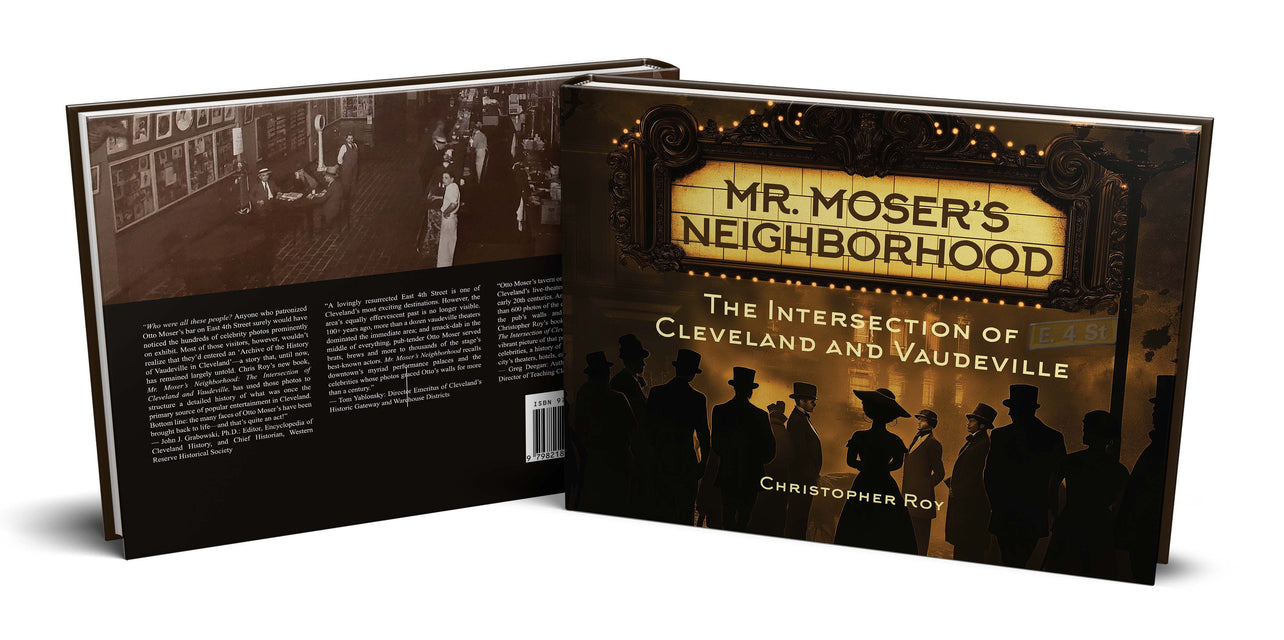Discover Cleveland’s forgotten theaters and the hundreds of performers who considered one downtown bar “the place to be"
Get the Book
Discover Cleveland’s forgotten theaters and the hundreds of performers who considered one downtown bar “the place to be"
Get the Book
Think of vaudeville (loose French translation: “voice of the city”) as “entertainment for everyone”...unrelated, wildly varying performances fused into a 90-120-minute show. At any given event, an audience might comprise young as well as old; women and children as well as men; proletariat as well as bourgeois; Blacks as well as Whites; foreign- as well as native-born. And all that eclecticism was perfectly mirrored on the vaudeville stage: a sequence of 8-10 separate acts that, in any give week, might feature...

Around 1900, tens of thousands of performers worked in vaudeville, and more than 2,000 vaudeville theaters were operating in the United States. In and near downtown Cleveland some 70 theaters (that’s right: 70!) featured vaudeville shows. Coast to coast, only church and school were attended more frequently.
And how does Mr. Moser fit in? That would be Otto Moser who, in 1893, opened an unassuming pub on East 4th Street (then called Sherrif Street), directly across from Cleveland’s most popular venue, The Euclid Avenue Opera House.



In short order, Otto’s place became downtown’s hippest hole in the wall: the go-to spot for an endless parade of performers appearing in the nearby theaters. For nearly 50 years Otto personally fed and watered actors, comedians, musicians, equilibrists, mimes, and impersonators. And more than 650 (that’s right: 650!) of those patrons grabbed a small piece of immortality by leaving behind an often signed and dated promo picture. All those images found a place on Otto’s walls and in display cases, making the pub a de-facto museum of vaudeville ephemera. After some 100 years (beginning around 2020) those photos were curated and scanned, with the names, backgrounds, and performances of more than 550 identified, compiled and cataloged.
Within these e-pages are a sampling of those photos (more than 125 additional ones can be found in a just-published book available through this site: Mr. Moser’ s Neighborhood: The intersection of Cleveland Vaudeville). Altogether, you’ll find a deeper history of vaudeville, a look at Cleveland’s long-gone theaters, an examination and history of performance categories, a look at the lives of vaudevillians, and a fond autopsy of vaudeville, which succumbed around 1930. Welcome to Mr. Moser’s Neighborhood!




